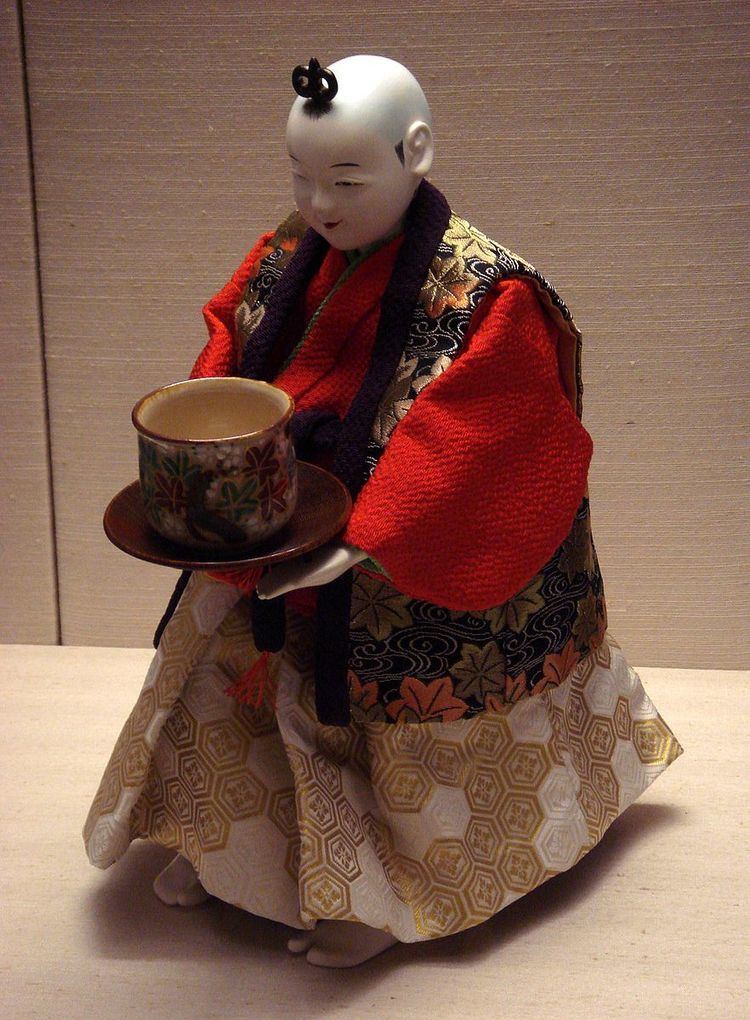 | ||
Karakuri puppets (からくり人形, karakuri ningyō) are traditional Japanese mechanized puppets or automata, originally made from the 17th century to 19th century. The dolls' gestures provided a form of entertainment. The word karakuri means "mechanisms" or "trick". It is used to describe any device that evokes a sense of awe through concealment of its inner workings.
Three main types of karakuri exist. Butai karakuri (舞台からくり?, stage karakuri) were used in theatre. Zashiki karakuri (座敷からくり?, tatami room karakuri) were small and used in homes. Dashi karakuri (山車からくり?, festival car karakuri) were used in religious festivals, where the puppets were used to perform reenactments of traditional myths and legends.
They influenced the Noh, Kabuki and Bunraku theatre.
Karakuri is alternatively written in Japanese kanji as 絡繰り, 絡繰, 機巧, 機関, and archaically as 唐繰.
Zashiki karakuri
The most common example today of a zashiki karakuri mechanism is a tea-serving robot, which starts moving forward when a cup of tea is placed on the plate in its hands. It was used in a situation when a host wanted to treat a guest in a recreational way. It moves in a straight line for a set distance, moving its feet as if walking, and then bows its head. This signals that the tea is for drinking, and the doll stops when the cup is removed. When it is replaced, the robot raises its head, turns around and returns to where it came from. It is typically powered by a wound spring made of whalebone, and the actions are controlled by a set of cams and levers.
